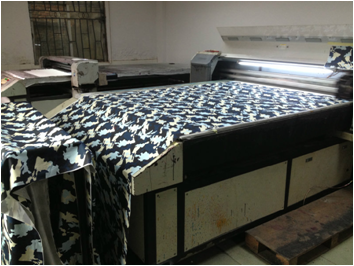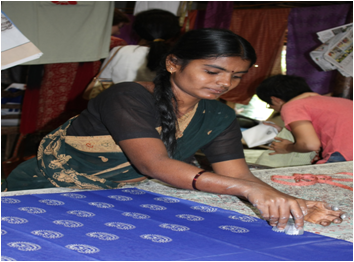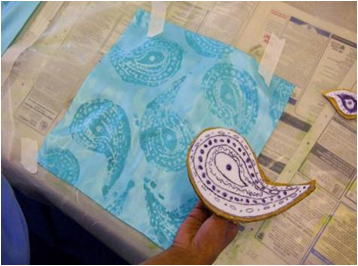The entire Printed Saree Collection undergoes a variety of printing methods that can be mainly classified into three categories:
Direct Printing : The most common method of printing patterns on silk sarees, in direct printing, the desired pattern is produced by imprinting dye onto the saree in the form of a paste that is made by adding a thickening agent to some water and dissolving the dye in it.
Discharge Printing : In discharge printing, the sarees is dyed in parts which are then printed with a chemical that erases the colour from the designed areas. This way multiple colors are used in printing by removing the base colour and printing another colour in its place. However, this method of printing is not very popular these days.
Resist Printing : In this kind of printing, a paste is applied to the fabric to resist the dye such that only the areas that are not covered by this resist dye are colored. After dyeing, the resist paste is removed leaving behind the desired pattern on to a dark background.
With these three techniques at the base, there are numerous methods practiced in the making of Printed silk sarees. For example: Block Printing, Roller Printing, Stencil Printing, Screen Printing, Blotch Printing, Jet Spray Printing, Warp Printing, Batik Dyeing, Tie Dyeing, Spray Painting and Digital printing to name a few, opening new avenues for weavers to use various mediums to express their creativity in the field of textile printing.
Discharge Printing : In discharge printing, the sarees is dyed in parts which are then printed with a chemical that erases the colour from the designed areas. This way multiple colors are used in printing by removing the base colour and printing another colour in its place. However, this method of printing is not very popular these days.
Resist Printing : In this kind of printing, a paste is applied to the fabric to resist the dye such that only the areas that are not covered by this resist dye are colored. After dyeing, the resist paste is removed leaving behind the desired pattern on to a dark background.
With these three techniques at the base, there are numerous methods practiced in the making of Printed silk sarees. For example: Block Printing, Roller Printing, Stencil Printing, Screen Printing, Blotch Printing, Jet Spray Printing, Warp Printing, Batik Dyeing, Tie Dyeing, Spray Painting and Digital printing to name a few, opening new avenues for weavers to use various mediums to express their creativity in the field of textile printing.



No comments:
Post a Comment